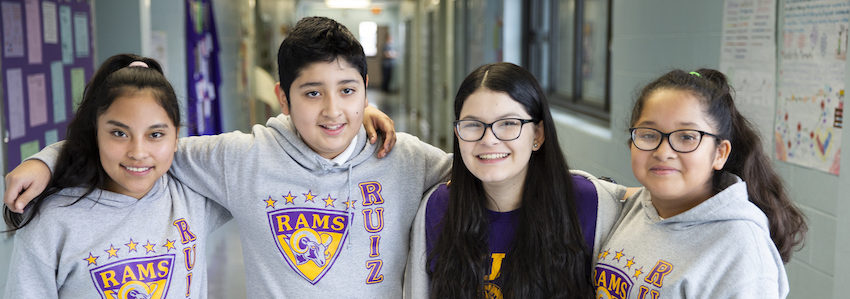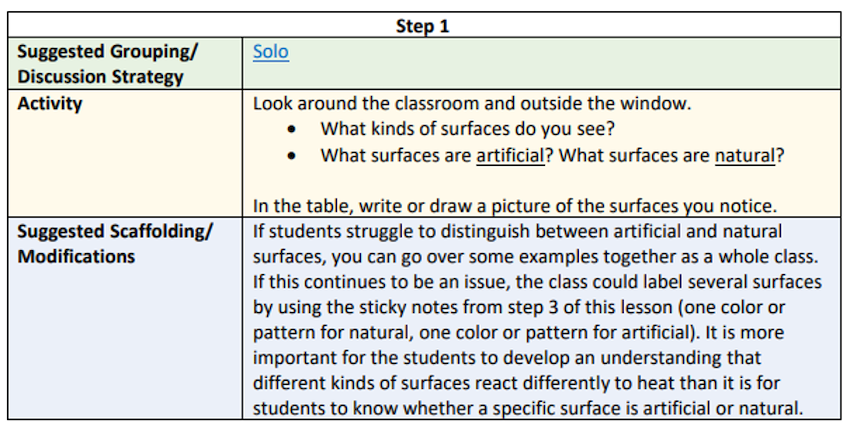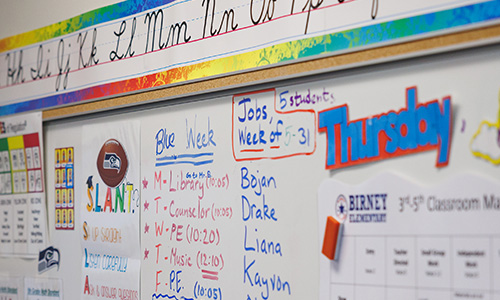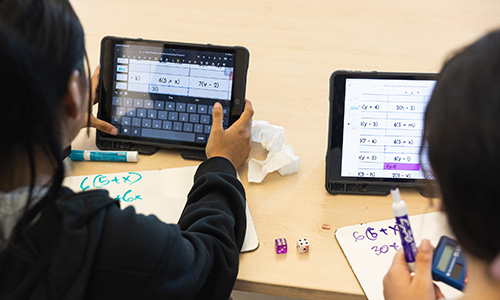
I’ve said it before and I’ll say it again: science is not neutral. Given this reality, it makes sense that students need opportunities to see science through an equity lens and build the skills to evaluate, interpret, and create scientific knowledge.
Social justice–oriented science is about addressing past wrongs committed in the name of science, but it is also about cultivating the next generation of scientific thinkers, doers, creators, and innovators. Leading researchers in science education agree, saying that “beyond addressing the moral and ethical demands of righting current and historic wrongs, a socially just approach to science education fosters the production of stronger science learning and ultimately stronger science through the integration of truly diverse questions, approaches, and resources.”
So now what? What can you do to incorporate social justice into your next science class? Our “It’s hot out here: Exploring heat in our world” lesson plans—which include a teacher guide and a student guide—can help. This lesson series is ready to use in classrooms and can also serve as a guide to the kinds of activities and practices that high-quality, justice-oriented science materials should include.
What are these lesson plans about?
The “It’s hot out here” lessons explore the deep connection between redlining and the people most affected by the urban heat effect, a clear and well-documented example of how science processes and human policies can interact to create inequitable outcomes.
Redlining was a practice through which banks and other financial institutions used an A–D rating system to categorize the riskiness of loans in a specific area. The ratings aligned highly with race and ethnicity: neighborhoods with a higher proportion of white residents received A and B ratings, while neighborhoods with more people of color received lower ratings, limiting economic investment in these areas. This directly impacted the physical landscape of these neighborhoods.
Despite redlining becoming illegal in 1968, neighborhoods with lower historical ratings have less tree cover, fewer parks, and more paved surfaces today. As a result, areas that were previously assigned C and D ratings continue to be hotter on average than their A and B counterparts in the same area. This difference can sometimes be as much as 12 degrees in neighborhoods only a few miles apart. Because this was such a widespread practice, this issue is relevant in nearly every community across the United States. Exploring these types of examples enables our students—and all of us— to better understand the science behind the problem and design more effective solutions.
What content is in the lesson plans?
The “It’s Hot Out Here” lesson plans include five lesson plans aimed at grades 6–8, which are appropriate for grades 9–12 as well. The lessons integrate Next Generation Science Standards across Earth science, life science, physical science, and engineering domains with the crosscutting concepts and science and engineering practices. The lessons also align to the social justice standards from Learning for Justice.
The lessons grow outward from personal experiences of heat-to-heat impacts at the community level. Through the lessons, students engage in deep analysis of robust data sets that include both environmental and social factors, create and revise models of the movement of heat energy through a system, and explore potential solutions within the context of their local community. The lessons culminate in an engineering and design thinking process that could be used throughout the year to problem-solve around a variety of justice-oriented science phenomena.
What features are in the lesson plans?
The lesson plans include a teacher guide and a student guide.
The teacher guide is meant to make implementation of the lessons as easy as possible. It includes an overview of the entire series of lessons, a materials and preparation schedule, details on alignment to NGSS and social justice standards, and a guide to each lesson. The individual lesson guides include essential questions, key terms, tips for implementation, suggestions for modifications, and optional scaffolds to differentiate instruction. They also include a step-by-step guide for every student activity, like the one below.

The teacher guide also includes a wealth of additional resources to walk teachers through the sometimes daunting process of integrating social justice into science classrooms. These include a set of inclusive discussion strategies used throughout the lessons and recommendations for practical strategies for facilitating conversations related to race, injustice, and other difficult topics.
The student guide lets students record, process, and expand their developing ideas. Each lesson includes essential questions, key terms, and guiding activities. These activities include solo journaling, class investigations, small group data explorations, and paired modeling. The activities are designed to include a variety of ways to engage with the content and share ideas. The activities include scaffolds, like sentence frames, graphic organizers, a visual glossary, and starter graphs and models that can be added, removed, or modified to fit the needs of individual students. The student guide also includes a midunit check-in and an end-of unit assessment to gauge growth throughout the unit.
The teacher guide and the student guide work together to facilitate an experience in which students explore an authentic issue, discover patterns and relationships that feel interesting to them, and design solutions that resonate with their lives. The guides aim to provide enough structure to generate productive learning experiences for all students while maintaining the flexibility to empower students in their own growth. This balance of support and freedom, along with the focus on a locally relevant issue, like the interplay between urban heat and redlining, are critical components of any justice-oriented science curriculum.
How do I explain to others why we need to talk about social justice in science class?
I’ll give you three reasons why social justice is important in your science classroom.
First and foremost, real-world science creates inequities and requires change to rectify those impacts. I‘ll repeat that science is not neutral. To treat science as neutral is particularly harmful because it perpetuates a culture that does not adequately evaluate the processes, impacts, or outcomes of science and does not recognize existing harms.
Beyond the moral and ethical call, justice-oriented science better prepares students to be creators and consumers of science. Real-world data builds real-life skills, and real-world phenomena and problems inspire real engagement. Students analyze robust data, craft their own explanations, and engage in debate about the validity and strength of evidence. They explore authentic questions of what data can and cannot tell us and develop the skills to interpret the myriad of scientific claims that infiltrate our everyday lives.
Lastly, all (yes, I said all) of the current state science standards acknowledge the idea that science is a human activity with ethical implications. While the NGSS may have the most robust call for the integration of science concepts and their social, cultural, and political contexts, even state standards that do not resemble the NGSS address the need to evaluate the ethical implications of scientific pursuits. Justice-oriented science is standards-aligned science.
Just start now
Our hope is that these lesson plans empower teachers to explore justice-oriented science practices. Use them however best serves you and your students as is, or pick and choose pieces. The possibilities for helping students see the wide-ranging impact of science on the world around them are endless.







